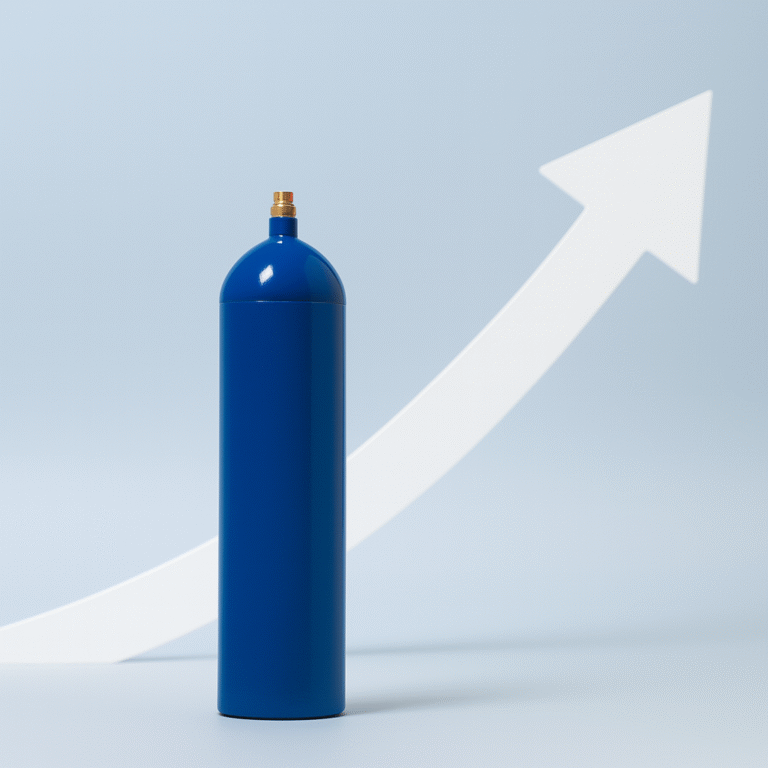Steel cylinders used to dominate the cream charger market. But as packaging costs, eco demands, and brand aesthetics evolve, buyers are making a decisive shift.
Aluminum cream chargers are lighter, cleaner, and more premium-looking—offering clear cost and marketing advantages for importers and private labels.

Switching materials isn’t just about looks. This article breaks down the real reasons behind the move from steel to aluminum, and helps distributors decide what’s worth the extra investment.
How Does the Material Affect Product Quality and Safety?
Steel welds weaken over time. Rust stains your product. Customers complain.
Aluminum cylinders are seamless, leak-proof, and rust-free—reducing defect rates and improving user safety.
Dive Deeper: Safety & Performance by Manufacturing Method
Aluminum cylinders are manufactured via hot extrusion and one-piece deep drawing, resulting in no welded seams. This eliminates weak points and minimizes long-term leakage risk. In contrast, most steel cylinders are two-piece welded, where seam failure is more likely under pressure.
| Feature | Steel Cylinders | Aluminum Cylinders |
| Structure | Welded, often visible seam | Seamless one-piece |
| Risk of leakage | Higher (welded joints) | Lower (no welds) |
| Oxidation/Rust | High (requires coating) | Rust-free |
| Pressure tolerance uniformity | Variable due to seam | Consistent across body |
Even the gas quality is safer—aluminum is more hygienic and easier to clean during manufacturing, reducing the risk of gas contamination. Many buyers now specify aluminum only when targeting premium catering or retail chains.
How Much Can You Save on Shipping and Storage?
You may pay more for aluminum upfront—but the real savings are in transport.
Aluminum cream chargers weigh up to 50% less than steel ones, allowing more units per pallet and lower freight costs.
Dive Deeper: Weight vs. Cost Optimization for B2B Importers
For a 640g gas-filled cylinder:
| Spec | Steel 640g | Aluminum 640g |
| Empty Bottle Weight | ~1080 g | ~670 g |
| Box Weight (6 pcs) | ~10.5 kg | ~8.2 kg |
| Pallet Capacity | ~432 pcs | 504 pcs |
| 40ft Container Load | ~15,552 pcs | 17,280 pcs |
The 15–20% extra loading capacity combined with 20–30% lower unit weight gives aluminum cylinders a clear cost edge on sea freight, especially important in peak Q3–Q4 seasons or for buyers using DDU/DDP terms.
Looking to optimize your next shipment? Try tools like SeaRates Container Calculator to simulate full-load efficiency.
Does Packaging and Branding Look Different?
Steel limits your brand’s appearance. Aluminum makes it shine.
Aluminum cylinders use glossy, seamless bodies and support waterproof thermoplastic film stickers—perfect for premium brand designs.
Dive Deeper: Sticker Quality & Market Appeal
Steel cylinders often come with matte, glue-based stickers that are prone to bubbling, peeling, or moisture damage. Aluminum’s smooth surface allows for:
- Bubble-free finish with high visual appeal
- Better adhesion for QR codes, matte/gloss accents
- Clean printing on fruit-flavored models or color caps
Many high-end brands also request custom base colors, latex caps, or metal nozzles—aluminum supports these enhancements with better fit and finish.
👉 Want to explore full OEM options for cylinder color, flavor, accessories, and branding? View our complete customizable cream charger options →
Are There Environmental or Regulatory Differences?
Sustainability sells. And compliance matters.
Aluminum is fully recyclable, leaves no rust residue, and aligns with Europe’s growing import preferences for low-carbon packaging.
Dive Deeper: Aluminum’s Eco & Compliance Benefits
- ♻️ Recyclability: 100% recyclable with no loss of performance
- 🔒 Less Residue: Steel rust may affect cream smell/flavor if mishandled
- 🌍 Global Compliance: Aluminum is often more easily certified under TPED, CE, or DOT for gas contact, compared to carbon steel variants
In fact, some European distributors report smoother clearance for aluminum-based chargers due to their weld-free, food-grade aluminum design and cleaner MSDS entries.
What About the Cost Difference?
This is the only real downside.
Aluminum cream chargers cost 15–25% more than equivalent steel ones.
Dive Deeper: When the Price Premium Pays Off
| Cost Area | Steel | Aluminum |
| Raw Material | Lower (Carbon Steel) | Higher (Aluminum) |
| Production | Simpler (welded shell) | Complex (extruded mold) |
| Sticker Application | Low-cost paper/film | Thermoplastic premium |
| Market Perception | Commodity, mid-market | Premium, upscale |
If you’re targeting mass-market, low-cost outlets, steel may still be viable.
But for private labels, supermarket chains, or e-commerce D2C, aluminum offers better ROI through brand value + logistics savings.
Conclusion
Aluminum cream chargers aren’t just a trend—they’re a strategic upgrade. From safer manufacturing to brand aesthetics, they offer long-term advantages for importers targeting premium buyers or sustainable markets. The switch may cost more per unit, but pays back through reduced shipping costs, easier clearance, and better shelf appeal.




